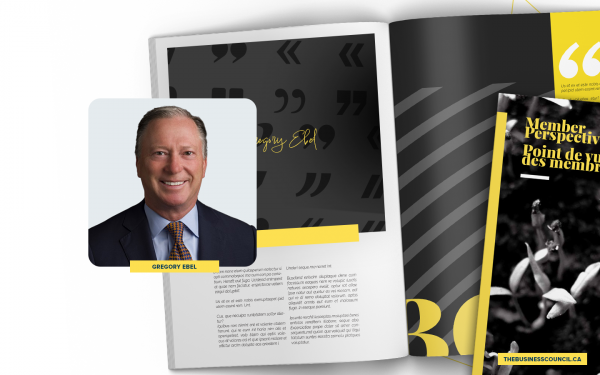Why an oil company is helping build homes in Indigenous communities
“Housing for Indigenous communities is a complex issue, which is why corporations tend to avoid playing a role. There are different housing models on First Nations and Métis lands, and there is varying involvement and responsibility of federal and municipal governments. It would be easy to view the problem as too insurmountable to tackle. But that was not an option for us.”
Alex Pourbaix
As published by the Edmonton Journal.
Cenovus Energy took a bold step Jan. 30 by announcing a $50-million commitment over five years to work with six Indigenous communities closest to our oilsands operations to help address their severe housing need. This is by far the largest community investment our company has ever made and an important component of Indigenous reconciliation.
The money will go towards the construction of an estimated 200 homes. Cenovus is also investing in training programs for community members to learn home-construction and maintenance skills, and possibly gain trades certifications. This will enable them to build and maintain the homes over the long term and it’s an opportunity for them to develop skills that can potentially lead to employment opportunities with neighbouring companies such as ours. Additionally, we will work with the communities to expand our funding for programs that address the social needs contributing to the housing and employment challenges.
When I joined Cenovus in 2017, one of my first priorities was to visit the First Nations and Métis communities that surround our oilsands operations. What I saw and heard had a profound impact on me. In my first meetings, and in every meeting since, community leaders have told me their biggest challenge is providing safe and affordable housing for their people. I toured homes that are overcrowded, mouldy, in serious disrepair and even sometimes without running water. The populations of these communities are growing, and often community members who want to return home can’t because there is nowhere to live.
Community leaders have done an admirable job of trying to provide sufficient housing — and I want to make it clear that there are many good homes in these communities — but the budgets simply haven’t been sufficient to address the demand. The downturn in oil and gas over the past years has had an additional impact since many of the communities use revenue earned through community-owned businesses that work in the oilsands to pay for homes.
This housing initiative is in addition to the recent commitment we made to invest at least $1.5 billion with Indigenous-owned business in our operating areas over the next decade. That’s on top of the $3 billion we’ve spent with Indigenous business partners since Cenovus launched in 2009.
Housing for Indigenous communities is a complex issue, which is why corporations tend to avoid playing a role. There are different housing models on First Nations and Métis lands, and there is varying involvement and responsibility of federal and municipal governments. It would be easy to view the problem as too insurmountable to tackle. But that was not an option for us.
Ensuring local communities benefit from our operations has always been a core value for Cenovus. We strongly believe that when they do well, we do well, and vice-versa. But when hundreds of people are without a solid roof over their head, no community can truly be said to be prospering.
If the first five years of this housing initiative accomplishes the goals that we agree upon with community leaders, which we are confident it will, our intent is to extend it to 10 years for a total $100-million investment. We know other Indigenous communities face the same housing challenges. My hope is that this commitment will inspire others in our industry, other industries and governments to step up and work with other Indigenous communities on solutions.
I’ve been asked what we’re demanding in return from the communities for this investment and the answer is nothing. This is about recognizing a profound challenge our neighbours are dealing with and doing our part to help. The greatest success would be for this initiative to serve as a model for other housing partnerships between corporations and Indigenous communities across the country, resulting in meaningful action to overcome this significant problem that has been allowed to continue for far too long.











